Pass Your Amazon AWS Certified Solutions Architect - Associate SAA-C02 Exam Easy!
Amazon AWS Certified Solutions Architect - Associate SAA-C02 Exam Questions & Answers, Accurate & Verified By IT Experts
Instant Download, Free Fast Updates, 99.6% Pass Rate
Amazon AWS Certified Solutions Architect - Associate SAA-C02 Practice Test Questions in VCE Format
| File | Votes | Size | Date |
|---|---|---|---|
File Amazon.practicetest.AWS Certified Solutions Architect - Associate SAA-C02.v2022-08-18.by.ellis.344q.vce |
Votes 2 |
Size 4.74 MB |
Date Aug 18, 2022 |
File Amazon.practiceexam.AWS Certified Solutions Architect - Associate SAA-C02.v2020-08-11.by.tommy.64q.vce |
Votes 3 |
Size 288.96 KB |
Date Aug 11, 2020 |
Amazon AWS Certified Solutions Architect - Associate SAA-C02 Practice Test Questions, Exam Dumps
Amazon AWS Certified Solutions Architect - Associate SAA-C02 (AWS Certified Solutions Architect - Associate SAA-C02) exam dumps vce, practice test questions, study guide & video training course to study and pass quickly and easily. Amazon AWS Certified Solutions Architect - Associate SAA-C02 AWS Certified Solutions Architect - Associate SAA-C02 exam dumps & practice test questions and answers. You need avanset vce exam simulator in order to study the Amazon AWS Certified Solutions Architect - Associate SAA-C02 certification exam dumps & Amazon AWS Certified Solutions Architect - Associate SAA-C02 practice test questions in vce format.
The Foundational Importance of Hands-On Labs for Amazon AWS Certification (SAA-C02)
Embarking on the journey to achieve AWS certification is a significant step in any technology professional's career. The path often begins with the AWS Certified Solutions Architect - Associate SAA-C02 and culminates in the prestigious AWS Certified Solutions Architect - Professional SAP-C02. These certifications are not mere acknowledgments of knowledge but are rigorous validations of your ability to design and deploy robust, secure, and efficient systems on the AWS platform. While the Associate level tests foundational knowledge, the Professional exam demands a deep, nuanced understanding of complex, multi-service architectures, making it a true test of an architect's skill. This series will guide you through a comprehensive preparation strategy that places hands-on experience at its core. Traditional study methods, such as reading documentation and watching video courses, are essential for building a theoretical base. However, to truly master the concepts required for the SAP-C02 exam and excel in a real-world architect role, you must move beyond theory. Practical application through dedicated labs is the bridge between knowing a service's function and understanding its behavior in a live, integrated environment. We will explore how this practical approach is the key to success. Throughout these five parts, we will deconstruct the exam domains, outline specific lab exercises, and develop a study plan that balances theoretical learning with practical implementation. We will cover core services, advanced architectural patterns, cost optimization strategies, and exam-day tactics. The goal is to equip you not just to pass an exam, but to become a confident and competent AWS Solutions Architect. This journey requires dedication, but with the right approach centered on hands-on practice, you can confidently achieve your certification goals and advance your career in the cloud computing landscape.
The Limits of Theoretical Knowledge
Relying solely on theoretical knowledge for AWS certification preparation is akin to learning to drive a car by only reading the owner's manual. You might understand the function of the steering wheel, accelerator, and brakes, but you would lack the practical skill and instinct required to navigate traffic, parallel park, or react to unexpected road conditions. Similarly, memorizing service limits, API calls, and feature sets provides a foundation, but it does not prepare you for the scenario-based questions that dominate the AWS Certified Solutions Architect - Professional SAP-C02 exam. These questions are designed to test your judgment as an architect. They present complex business problems and require you to select the most appropriate solution based on constraints related to cost, performance, security, and reliability. There is often more than one technically correct answer, but only one is the optimal choice within the given context. This level of discernment can only be developed by experiencing how AWS services interact, where their limitations lie, and how they behave under different loads and configurations. Without hands-on experience, you are merely guessing based on memorized facts rather than making an informed decision based on practical wisdom. Furthermore, the AWS platform is constantly evolving, with new services and features being released at a rapid pace. While documentation is updated, the subtle implications of these changes on architectural design are best understood through experimentation. Theoretical study can quickly become outdated, but the problem-solving skills honed through hands-on labs are timeless. They teach you how to approach a challenge, research potential solutions, implement a design, and troubleshoot issues, which are the core competencies of a successful solutions architect. The exam validates these very skills, making practical experience an indispensable component of your preparation.
Building Cloud Muscle Memory with Hands-On Labs
Hands-on labs are the most effective way to build what can be called "cloud muscle memory." This is the intuitive ability to design, deploy, and troubleshoot AWS architectures without constantly referring to documentation for basic steps. When you repeatedly configure a Virtual Private Cloud (VPC), launch an EC2 instance, or set up an Auto Scaling group, the process becomes second nature. This fluency is critical during the time-pressured environment of the SAP-C02 exam, where you have just over two minutes per question to read, analyze, and answer complex scenarios. This muscle memory extends beyond just procedural tasks. Through practical application, you begin to internalize the intricate relationships between different AWS services. You learn firsthand why a security group rule is not working, how an incorrect IAM policy can block access, or how latency in one region affects a global application. These experiences create strong neural pathways that are far more resilient than rote memorization. When you encounter an exam question about troubleshooting VPC connectivity, you will not be trying to recall a textbook diagram; you will be drawing upon your memory of actually building and debugging a network. Moreover, labs provide a safe environment for failure. In a production environment, a misconfiguration can lead to downtime, data loss, or security vulnerabilities. In a sandboxed lab account, making mistakes is a crucial part of the learning process. You can experiment with different settings, push services to their limits, and observe the consequences without any real-world risk. This freedom to explore and learn from errors is what transforms theoretical knowledge into practical expertise, building the confidence and competence needed to tackle both the exam and real-world architectural challenges.
Transitioning from SAA-C02 to SAP-C02
The journey from the AWS Certified Solutions Architect - Associate SAA-C02 to the Professional SAP-C02 represents a significant leap in complexity and depth. The Associate exam validates your ability to design a well-architected solution for a specific problem using core AWS services. It focuses on individual service features and best practices for common use cases. Your hands-on labs at this stage might involve setting up a highly available web application using an Elastic Load Balancer, an Auto Scaling group of EC2 instances, and an RDS database in a Multi-AZ configuration. The Professional exam, however, assesses your ability to design complex solutions that solve business problems at scale. It requires you to think across multiple domains, including multi-account governance, hybrid cloud connectivity, data migration strategies, and enterprise-wide security controls. The questions are longer, more ambiguous, and often involve integrating a dozen or more services to meet a layered set of requirements. Simply knowing what each service does is no longer sufficient; you must understand how to orchestrate them into a cohesive, cost-effective, and resilient architecture that spans an entire organization. Therefore, your hands-on lab strategy must evolve accordingly. While SAA-C02 labs focus on building blocks, SAP-C02 labs should focus on integration. Instead of just creating a VPC, you will be designing and implementing a multi-region network with VPC peering or Transit Gateway. Instead of just launching an EC2 instance, you will be planning a fleet-wide migration strategy. This shift requires a broader perspective and a deeper understanding of the trade-offs involved in architectural decisions, a perspective that can only be gained through extensive, hands-on practice with these advanced scenarios.
Setting Up Your Practice Environment
Before diving into labs, it is crucial to establish a suitable practice environment. The most direct approach is to use the AWS Free Tier, which provides a limited amount of usage for many core services at no cost for the first twelve months after signing up. This is an excellent way to get started and become familiar with the AWS Management Console, CLI, and SDKs. You can perform many of the foundational lab exercises required for both the SAA-C02 and SAP-C02 certifications within the Free Tier limits, such as launching small EC2 instances, storing data in S3, and experimenting with Lambda functions. However, it is essential to be mindful of the Free Tier's limitations. Exceeding the allocated usage can result in unexpected charges. To prevent this, you must diligently set up AWS Budgets and billing alarms. These tools will notify you when your usage approaches or exceeds predefined thresholds, allowing you to shut down resources before they incur significant costs. Learning to manage your own account's billing is, in itself, a valuable hands-on lesson in cost optimization, a key domain of the SAP-C02 exam. Always remember to terminate all resources after completing a lab session. For more complex scenarios that require resources beyond the Free Tier, consider using dedicated hands-on lab platforms. Many training providers offer sandboxed AWS environments that are pre-configured for specific exercises and have a fixed cost, eliminating the risk of surprise bills. These platforms often provide guided, step-by-step instructions for building advanced architectures, such as setting up a Direct Connect gateway or performing a database migration. While they may involve a subscription fee, the structured learning experience and financial peace of mind they offer can be a worthwhile investment in your certification journey.
Core AWS Concepts for Foundational Labs
To build a solid foundation for the more advanced topics on the SAP-C02, you must first achieve complete mastery over the core AWS services. Your initial hands-on labs should be centered around these fundamental building blocks. Start with Identity and Access Management (IAM). Go beyond just creating users; create IAM roles and policies, and understand the principle of least privilege by granting only the necessary permissions for a specific task. Practice assuming a role from the CLI and understand how it provides temporary, secure credentials for your applications and services. Next, focus on Amazon Virtual Private Cloud (VPC). Do not rely on the default VPC. Build your own custom VPC from scratch. This includes creating public and private subnets across multiple Availability Zones, configuring route tables, and setting up an Internet Gateway and a NAT Gateway. Practice configuring Network ACLs and Security Groups, understanding their differences as stateless and stateful firewalls, respectively. A deep, practical understanding of AWS networking is arguably the most critical skill for any solutions architect and is heavily tested on both the Associate and Professional exams. Finally, master the core compute and storage services. For Amazon EC2, practice launching instances from different AMIs, attaching EBS volumes, and creating launch templates for Auto Scaling groups. For Amazon S3, experiment with storage classes, configure lifecycle policies to automatically transition objects, and enable versioning and cross-region replication. These services are the bedrock of most AWS architectures. Gaining hands-on fluency with their configuration and behavior will provide the confidence and knowledge needed to tackle the more complex, integrated scenarios you will face later in your studies.
The Psychology of Active Learning
The reason hands-on labs are so effective lies in the psychology of active learning. Passive learning methods, such as reading or watching videos, engage only a limited part of your brain. While you may absorb information, it is often stored as short-term, abstract knowledge that is difficult to recall and apply under pressure. Active learning, in contrast, involves engaging with the material directly, forcing your brain to process information, make decisions, and solve problems. This active engagement creates richer, more durable neural connections, embedding the knowledge into your long-term memory. When you are working through a lab, you are not just learning what a service does; you are learning how it works. You encounter error messages that force you to troubleshoot. You face unexpected behavior that compels you to consult documentation and deepen your understanding. This process of struggle and discovery is where true learning happens. It transforms abstract concepts into tangible experiences. You will remember the frustration of debugging a misconfigured security group far more vividly than you will remember a slide that listed the correct port numbers. This experiential knowledge is invaluable on exam day. This approach also builds confidence. Every successfully completed lab, every solved problem, and every new architecture you build reinforces your belief in your own abilities. This confidence reduces exam anxiety and allows you to approach complex questions with a calm, analytical mindset. Instead of feeling overwhelmed by a long scenario, you will be able to deconstruct it, identify the core requirements, and draw upon your practical experience to formulate the best solution. In essence, hands-on labs do not just teach you AWS; they transform you into an AWS professional.
Introduction to Practical Service Mastery
Having established the foundational importance of hands-on learning, we now transition from the "why" to the "what." This part of our series will provide a detailed roadmap for gaining practical mastery over the core AWS services that form the backbone of both the AWS Certified Solutions Architect - Associate SAA-C02 and the Professional SAP-C02 exams. Simply reading about these services is insufficient. To excel, you must immerse yourself in the AWS Management Console, the Command Line Interface (CLI), and Infrastructure as Code (IaC) tools, building and deconstructing architectures until their behavior becomes intuitive. We will move systematically through the essential domains of networking, compute, storage, databases, and security. For each domain, we will outline specific, practical lab exercises designed to deepen your understanding beyond the surface level. These are not simple "click-through" tutorials; they are designed to make you think like an architect, forcing you to consider trade-offs, troubleshoot common issues, and implement solutions that are secure, scalable, and resilient. The goal is to build a portfolio of hands-on experiences that you can directly map to the challenging scenario-based questions you will face on the exam. As you work through these labs, focus on the interconnectedness of the services. No AWS service operates in a vacuum. A change to a route table in a VPC can impact the connectivity of an EC2 instance, which in turn affects the performance of an application relying on an S3 bucket. By building multi-service solutions, you will develop the holistic perspective required of a professional-level architect. This practical, integrated approach will solidify your knowledge and prepare you to confidently tackle any architectural challenge, both in the exam and in your professional career.
Networking Deep Dive: Building a Resilient VPC
A deep and practical understanding of Amazon VPC is non-negotiable for success. Your first major lab project should be to build a highly available and secure custom VPC from the ground up, without using the VPC wizard. Start by defining a CIDR block and then carefully plan your subnetting strategy. Create at least four subnets: two public and two private, distributed across two different Availability Zones. This simple act immediately forces you to think about fault tolerance and high availability, which are central themes of the exams. Next, configure the networking components. Create an Internet Gateway and attach it to your VPC. Create a route table for your public subnets and add a route to the Internet Gateway, allowing resources in those subnets to communicate with the internet. For your private subnets, create a NAT Gateway in one of your public subnets and configure the private route table to direct outbound internet traffic through it. This exercise solidifies your understanding of how to provide internet access to private resources without exposing them to inbound connections. Finally, implement security layers. Create a web server security group that allows inbound traffic on ports 80 and 443 from anywhere. Create a separate database security group that only allows inbound traffic on the database port from the web server security group. This demonstrates the best practice of using security groups as stateful firewalls to enforce the principle of least privilege. Additionally, configure Network Access Control Lists (NACLs) as a stateless, secondary defense layer at the subnet level. Completing this lab end-to-end provides an unshakable foundation in AWS networking.
Compute Solutions: Mastering EC2 and Auto Scaling
With your network in place, the next step is to master core compute services. The goal is to move beyond simply launching a single EC2 instance. Your labs should focus on creating scalable, resilient, and manageable compute fleets. Begin by creating a Launch Template. In this template, define the AMI, instance type, key pair, and security groups. More importantly, use the "User Data" field to bootstrap your instances with a simple script that installs a web server. This teaches you how to automate instance configuration and ensure consistency. Now, use this Launch Template to create an Auto Scaling group (ASG). Configure the ASG to span the two private subnets you created in your custom VPC. Set the desired, minimum, and maximum capacity. This is where the real learning begins. Experiment with different scaling policies. Create a target tracking scaling policy based on average CPU utilization to understand how the ASG automatically adds and removes instances in response to load. Then, create a scheduled scaling action to see how you can proactively adjust capacity for predictable traffic patterns. To complete the architecture, create an Application Load Balancer (ALB). Configure the ALB to listen on port 80 and forward traffic to a target group containing the instances in your ASG. Set up a health check to ensure the ALB only sends traffic to healthy instances. Now, test your setup. Terminate one of the instances and watch the ASG automatically launch a replacement. Use a load testing tool to increase CPU utilization and observe the ASG scale out. This hands-on experience with dynamic scaling and self-healing is precisely what the exam questions will test.
Advanced Storage Strategies with S3 and EBS
Amazon S3 is far more than just a simple object storage service. A professional architect must understand its advanced features to design cost-effective and durable data solutions. Your S3 labs should focus on data management and security. Create a bucket and enable versioning. Upload a file, then upload a new version of the same file. Practice retrieving and restoring the previous version. This simple exercise demonstrates how S3 can protect against accidental deletions or overwrites, a key concept in data durability. Next, configure a lifecycle policy. Set up a rule that automatically transitions objects from the S3 Standard storage class to S3 Infrequent Access after 30 days, and then archives them to S3 Glacier Deep Archive after 90 days. This provides direct, practical experience with one of the most important cost optimization techniques on AWS. To understand data replication, configure Cross-Region Replication (CRR) to automatically copy objects from your source bucket to a destination bucket in another AWS Region. This is a fundamental pattern for disaster recovery. For block storage, focus on Amazon EBS. Launch an EC2 instance and attach multiple EBS volumes of different types, such as General Purpose SSD (gp3) and Provisioned IOPS SSD (io2). Use a benchmarking tool to observe the performance differences. Practice creating EBS snapshots and understand that they are incremental backups stored in S3. Create a new volume from a snapshot and attach it to another instance to simulate a data recovery scenario. Master the process of resizing an EBS volume on a running Linux instance, which involves both the AWS console and OS-level commands.
Database Design in Practice: RDS and DynamoDB
Your hands-on labs for databases should focus on the distinct use cases for relational and NoSQL databases. For Amazon RDS, the key is to understand high availability and scalability. Create an RDS instance running MySQL or PostgreSQL. Crucially, deploy it in a Multi-AZ configuration. During the lab, perform a reboot with failover. While the failover is in progress, observe how your application's connection is temporarily disrupted and then automatically re-established with the new primary instance. This provides a tangible understanding of how Multi-AZ enhances fault tolerance. To practice scalability, create a read replica for your RDS instance in a different Availability Zone. Connect to the read replica and verify that you can query the data but cannot perform write operations. This lab demonstrates how to offload read traffic from your primary database to improve performance for read-heavy applications. This is a common architectural pattern that appears frequently in exam scenarios. Understand the difference between Multi-AZ for high availability and read replicas for scalability. For Amazon DynamoDB, shift your thinking to NoSQL concepts. Design and create a DynamoDB table with a well-chosen primary key and sort key. Use the AWS CLI to perform BatchWriteItem and BatchGetItem operations. Experience the performance of DynamoDB by running queries and scans, and note the difference in efficiency. A key lab is to create a Global Secondary Index (GSI) on your table to support an additional query pattern. This practical exercise will solidify your understanding of how GSIs provide flexibility without compromising the performance of your main table.
Practical Security and Identity with IAM
Identity and Access Management (IAM) is the foundation of security in AWS, and it is a topic that requires deep, hands-on understanding. Go beyond creating simple IAM users. The most important concept to master through labs is IAM roles. Create an IAM role for EC2. Attach a policy to this role that grants read-only access to a specific S3 bucket. Launch an EC2 instance and associate this role with it. Once the instance is running, use the AWS CLI from within the instance to access the S3 bucket without any configured credentials. This demonstrates the secure, credential-less way to grant permissions to AWS resources. Another critical lab is to simulate cross-account access. This is a core concept for the SAP-C02 exam, which emphasizes multi-account strategies. You will need two AWS accounts for this. In Account A (the trusting account), create an IAM role. Modify its trust policy to allow an IAM user or role from Account B (the trusted account) to assume it. In Account B, grant the user permission to call the sts:AssumeRole API for the role in Account A. Then, from the CLI in Account B, assume the role in Account A and perform actions. This complex but vital lab demystifies how large organizations manage permissions across dozens of accounts. Finally, practice creating and testing IAM policies. Use the IAM policy simulator to test your policies before deploying them. Create a complex policy that includes conditions, such as allowing access only from a specific IP address range or only when multi-factor authentication (MFA) is enabled. Create a policy that grants access to a specific folder within an S3 bucket for one user, while denying access to another. These granular exercises will train you to think with the precision required for enterprise security and prepare you for the nuanced IAM questions on the exam.
Introduction to Complex Architectural Design
Having solidified your hands-on skills with core AWS services, it is time to ascend to the next level of complexity. The AWS Certified Solutions Architect - Professional SAP-C02 exam distinguishes itself by focusing not just on individual services, but on their orchestration into large-scale, enterprise-grade solutions. This part of our series is dedicated to the advanced architectural patterns that are central to the professional-level certification. We will explore how to design systems that are not only functional but also highly available, fault-tolerant, secure, and cost-effective across a global organization. The labs in this section will challenge you to think like a senior architect responsible for an entire enterprise's cloud strategy. We will move from building single applications to designing multi-account governance structures. We will transition from simple backups to comprehensive disaster recovery and migration plans. You will work with hybrid connectivity, advanced security services, and serverless architectures. These topics are the heart of the SAP-C02 exam and represent the real-world challenges faced by experienced cloud professionals daily. Success at this stage requires a shift in mindset. You must now consider the broader business context, including compliance requirements, budget constraints, and operational overhead. Each lab will force you to weigh the trade-offs between different architectural choices. For example, when is it better to use a Transit Gateway over VPC peering? What are the implications of choosing AWS Backup versus custom backup scripts? By working through these complex scenarios, you will develop the sophisticated judgment and deep technical expertise necessary to earn your professional certification and lead complex cloud initiatives.
High Availability and Multi-Region Disaster Recovery
True architectural resilience goes beyond the Multi-AZ capabilities covered in foundational labs. For the SAP-C02, you must design for region-level failures. A critical hands-on lab is to build a multi-region active-passive disaster recovery solution. Begin by deploying the scalable web application you built in Part 2 in your primary region, for example, us-east-1. This includes the Application Load Balancer, Auto Scaling group, and a multi-AZ RDS database. Next, replicate your infrastructure in a secondary, disaster recovery region, such as us-west-2. Use Infrastructure as Code (IaC) like AWS CloudFormation or Terraform to ensure a consistent deployment. For your data layer, create a cross-region read replica for your RDS database. For your application data in S3, enable Cross-Region Replication. Now, configure Amazon Route 53 with a failover routing policy. Create two records for your application's domain: a primary record pointing to the ALB in us-east-1 and a secondary record pointing to the ALB in us-west-2. Configure a health check for the primary endpoint. To test your setup, simulate a failure in the primary region. You can do this by stopping the web server on the EC2 instances or by misconfiguring a security group to make the health check fail. Observe as Route 53 detects the failure and automatically begins routing all traffic to the secondary region. To complete the failover, you would need to promote the RDS read replica to a standalone database. This end-to-end exercise provides invaluable practical experience in designing for true disaster recovery, a frequently tested topic.
Mastering Multi-Account Governance with AWS Organizations
Large enterprises rarely operate out of a single AWS account. A core competency for a professional architect is managing a multi-account environment. For this lab, you will need access to at least two AWS accounts that you can enroll in an AWS Organization. From the management account, create your Organization. Then, send an invitation to your second account and accept it to have it join the Organization. This simple first step is the foundation of centralized governance. Within your Organization, create several Organizational Units (OUs). For example, create a "Production" OU and a "Development" OU. Move your accounts into the appropriate OUs. Now, explore the power of Service Control Policies (SCPs). Create an SCP at the root of your Organization that denies access to a specific region, for example, sa-east-1, to enforce data residency requirements. Then, create a more granular SCP and attach it to the "Development" OU that prevents developers from launching expensive instance types. This lab demonstrates how SCPs act as guardrails, not permissions. Finally, practice centralized management. From the management account, use AWS CloudFormation StackSets to deploy a common IAM role across all accounts in your "Production" OU. This is a powerful technique for ensuring that your security or operations team has the necessary access to all production environments. You can also configure centralized logging by creating an S3 bucket in a dedicated logging account and setting up AWS CloudTrail in the management account to send all organizational logs to this central location. This hands-on experience with AWS Organizations is critical for the SAP-C02.
Complex Migration Scenarios to the Cloud
Migrating existing workloads to AWS is a common and complex task for solutions architects. Your labs should cover different types of migrations. Start with a database migration. Set up a self-managed MySQL or PostgreSQL database on an EC2 instance to simulate an on-premises server. Then, use the AWS Database Migration Service (DMS) to perform a migration to a managed Amazon RDS instance. Create a replication instance, source and target endpoints, and a replication task. For this DMS lab, perform a continuous replication with Change Data Capture (CDC). After the initial data load is complete, make changes to the source database on the EC2 instance and watch as DMS automatically replicates those changes to the target RDS instance in near real-time. This demonstrates how to perform a migration with minimal downtime. Understanding the roles of DMS and the Schema Conversion Tool (SCT) is crucial for exam questions related to heterogeneous database migrations. Next, simulate a server migration. Use the AWS Application Migration Service (MGN) to replicate a source EC2 instance (simulating an on-premises server) to a staging area in your AWS account. The Application Migration Service installs a lightweight agent on the source server that continuously replicates its block-level data. Once replication is complete, you can launch a test instance to verify the migration. Finally, perform a cutover to launch the production instance on AWS. This lab provides practical experience with the lift-and-shift migration strategy.
Hybrid Cloud and Advanced Connectivity
Many organizations operate in a hybrid model, connecting their on-premises data centers to AWS. While setting up a physical AWS Direct Connect is not feasible for most learners, you can simulate hybrid connectivity using a Site-to-Site VPN. For this lab, you will need to configure a VPC with a Virtual Private Gateway (VGW). Then, you will need to configure a customer gateway, which represents your on-premises router. You can simulate the on-premises side using a software VPN appliance, such as strongSwan or OpenSwan, running on an EC2 instance in a different VPC. Create a Site-to-Site VPN connection in the AWS console. This will generate the configuration details needed for your customer gateway. Configure your software VPN appliance with the provided tunnel endpoint IP addresses, pre-shared keys, and encryption settings. Once the tunnels are up, configure routing on both sides. Use static routes or BGP to propagate routes between your on-premises network (the simulated VPC) and your AWS VPC. Test the connection by launching an EC2 instance in each VPC and using private IP addresses to ping between them. This lab demystifies the complex process of establishing secure hybrid connectivity. To take this a step further, explore AWS Transit Gateway. Redo the lab, but this time connect multiple VPCs and your simulated on-premises network to a central Transit Gateway. This demonstrates how Transit Gateway acts as a cloud router, simplifying network architecture and management by eliminating the need for complex VPC peering meshes. Understanding when to use a Transit Gateway is a key differentiator at the professional level.
Implementing Advanced Security Architectures
Beyond the foundational security of IAM and security groups, the SAP-C02 exam expects you to be proficient with AWS's specialized security services. A vital lab is to protect a web application using AWS WAF (Web Application Firewall). Deploy your standard web application behind an Application Load Balancer. Then, create a WAF Web ACL and associate it with the ALB. In the Web ACL, configure several rules. Add the AWS managed rule set for SQL injection to automatically block common database attack patterns. Then, create a custom rule that blocks traffic from a specific IP address or country. Use a tool to send simulated malicious traffic to your application's endpoint and observe as AWS WAF blocks the requests. This practical experience shows how WAF provides a critical layer of defense at the application edge. Another important security lab involves data encryption with AWS Key Management Service (KMS). Create a customer-managed Customer Master Key (CMK). Configure a key policy that defines who can administer and use the key. Then, create an S3 bucket and configure default encryption to use your new CMK. Upload a file to the bucket and verify that the object is encrypted using your key. Practice cross-account access to the key by modifying the key policy to allow an IAM role from another account to use it for decryption. This lab solidifies your understanding of centralized key management and data protection.
Introduction to Architecting the AWS Way
Possessing deep, hands-on knowledge of AWS services is essential, but it is only half the battle. To succeed on the AWS Certified Solutions Architect - Professional SAP-C02 exam, you must learn to think like an AWS architect. This means evaluating every design choice against a consistent, proven set of principles. The AWS Well-Architected Framework is the embodiment of these principles. It is a structured approach for evaluating architectures and implementing designs that can scale and evolve over time. This part of our series will focus on translating your practical lab skills into the language and logic of the Framework. The Well-Architected Framework is built on six pillars: Operational Excellence, Security, Reliability, Performance Efficiency, Cost Optimization, and Sustainability. The SAP-C02 exam is, in essence, a comprehensive test of your ability to apply these pillars to complex, real-world scenarios. The questions are not just about "what" service to use, but "why" you should use it in the context of these competing priorities. For instance, a solution that is highly reliable and performant might not be cost-effective. Your job as an architect is to find the optimal balance. In this section, we will connect specific hands-on lab experiences to each of the pillars. We will show you how the practical skills you have developed directly demonstrate your understanding of Well-Architected principles. We will then pivot to exam-specific strategies, discussing how to deconstruct the long, scenario-based questions, manage your time effectively, and avoid common pitfalls. By combining your hands-on expertise with a deep understanding of the Framework and a solid exam strategy, you will be fully prepared to demonstrate your professional-level architecting skills.
The Operational Excellence Pillar in Practice
Operational Excellence is the pillar focused on running and monitoring systems to deliver business value, and continuously improving supporting processes and procedures. It is about automating changes, responding to events, and managing daily operations. Your hands-on experience with Infrastructure as Code (IaC) is the most direct application of this pillar. The practice of defining your entire architecture in AWS CloudFormation or Terraform templates is a core tenet of operational excellence. A key lab for this pillar is to build a CI/CD pipeline using AWS CodePipeline. Create a simple web application and store its code in AWS CodeCommit or another Git repository. Create a CodeBuild project to build and test your application. Finally, create a CodePipeline that automates the entire process: it should trigger on a commit, send the code to CodeBuild, and then deploy the updated application to your EC2 fleet, perhaps using AWS CodeDeploy. This end-to-end automation lab demonstrates the principle of making frequent, small, reversible changes. Another crucial aspect is monitoring and observability. Set up detailed Amazon CloudWatch monitoring for the application you deployed. Create custom metrics, such as memory utilization, using the CloudWatch agent. Build a CloudWatch Dashboard that provides a single-pane-of-glass view of your application's health. Then, create CloudWatch Alarms that trigger notifications via Amazon SNS when a key metric, like CPU utilization or latency, crosses a defined threshold. This practical experience with monitoring and alerting is fundamental to running workloads effectively and is a key topic for the exam.
Applying the Security Pillar
The Security pillar focuses on protecting information, systems, and assets while delivering business value through risk assessments and mitigation strategies. This involves implementing a strong identity foundation, enabling traceability, applying security at all layers, automating security best practices, and protecting data in transit and at rest. Your hands-on labs with IAM, KMS, and AWS WAF have already given you a strong foundation here. To deepen your practical skills, focus on detective controls and traceability. A critical lab is to set up and configure AWS GuardDuty. Enable GuardDuty in your account and let it run. After some time, it will begin to analyze your AWS CloudTrail logs, VPC Flow Logs, and DNS logs for malicious activity. Review the findings that GuardDuty generates. Even in a simple lab account, it might flag unusual port scanning activity or API calls from an unfamiliar IP address. This experience shows you how to automate threat detection. Another key lab is to centralize and analyze logs. Configure VPC Flow Logs to be published to Amazon S3. Set up AWS CloudTrail to log all API activity. Then, use Amazon Athena to query these logs directly in S3. For example, write an Athena query to find all API calls that resulted in an "unauthorized" error, or to identify which IP addresses are communicating with a specific EC2 instance. This demonstrates the principle of traceability and gives you the hands-on skill to investigate a security incident, a common requirement in professional architect roles.
The Reliability Pillar and Failure Scenarios
The Reliability pillar is about ensuring a workload performs its intended function correctly and consistently. A key part of this is designing systems that can withstand and recover from failures. Your previous labs on Multi-AZ deployments for RDS and Auto Scaling groups across multiple AZs are the foundation of reliability. Now, you must actively test this resilience. The best way to learn reliability is to practice "chaos engineering" in your lab environment. Take the highly available web application you built earlier and intentionally try to break it. Terminate one of the EC2 instances in your Auto Scaling group and use CloudWatch to measure how long it takes for the ASG to launch a replacement and for the application to fully recover. Manually fail over your Multi-AZ RDS database and time the recovery process. Delete the NAT Gateway and observe how the private instances lose internet connectivity, then practice recreating it. An even more advanced lab is to simulate a full Availability Zone failure. You can do this by using a Network ACL to block all traffic into and out of the subnets in one of your AZs. Observe how your Application Load Balancer stops sending traffic to the instances in that AZ and relies on the healthy instances in the other AZ. See how your Multi-AZ RDS database automatically fails over. Actively simulating these failures and measuring the system's response provides a deep, intuitive understanding of resilient design that cannot be gained from reading alone.
Performance Efficiency and Cost Optimization
The Performance Efficiency pillar focuses on using computing resources efficiently to meet system requirements and maintaining that efficiency as demand changes and technologies evolve. The Cost Optimization pillar is about running systems to deliver business value at the lowest price point. These two pillars are often in tension, and the architect's job is to find the right balance. A great lab for performance efficiency is to benchmark different storage and compute options. For example, deploy a database on an EC2 instance with an EBS gp3 volume. Run a load test and measure the transactions per second. Then, deploy the same database on an instance with a local NVMe instance store volume and repeat the test. The dramatic performance difference will give you a tangible feel for different storage options. Similarly, experiment with AWS Graviton (ARM-based) instances versus traditional x86 instances to see the price-performance benefits firsthand. For cost optimization, the key is to practice identifying and eliminating waste. Use AWS Cost Explorer to analyze your lab account's spending. Enable AWS Compute Optimizer to get recommendations for rightsizing your EC2 instances. A crucial lab is to implement a data archiving strategy. Set up an S3 bucket with an S3 Intelligent-Tiering configuration, which automatically moves data between access tiers based on usage patterns. Then, create a lifecycle policy to move older, infrequently accessed data to S3 Glacier, demonstrating a powerful automated cost-saving technique.
Deconstructing Exam Questions and Time Management
With your practical skills honed and aligned to the Well-Architected Framework, the final step is to master the exam itself. The SAP-C02 is notorious for its long, complex questions filled with extraneous detail. Your first task when reading a question is to identify the core problem and the key constraints. Look for keywords like "most cost-effective," "highest performance," or "most operationally efficient." These are direct signals pointing to which Well-Architected pillar you should prioritize in your answer. Practice highlighting or mentally flagging these keywords as you read. After identifying the core requirement, quickly scan the answers. Often, you can immediately eliminate two of the four options because they are technically incorrect or do not address the primary constraint. This leaves you with two plausible options. Now, you must use your deep knowledge and hands-on experience to discern the subtle difference that makes one solution better than the other. This often comes down to a specific feature or limitation of a service that you would only know from practical experience. Time management is critical. You have 180 minutes for 75 questions, which averages to 2.4 minutes per question. Do not get bogged down on a single difficult question. If you are unsure after a minute or two, make your best educated guess, flag the question for review, and move on. It is better to answer all questions than to spend ten minutes perfecting one answer while leaving five questions unanswered at the end. Build your time management skills by taking full-length, timed practice exams. This will simulate the pressure of the real exam and help you refine your pacing and strategy.
Introduction to the Final Mile
You have journeyed through the foundational principles of hands-on learning, taken a deep dive into core AWS services, built complex enterprise architectures, and aligned your knowledge with the Well-Architected Framework. Now, you stand at the threshold of the final phase of your preparation for the AWS Certified Solutions Architect - Professional SAP-C02 exam. This concluding part of our series is designed to guide you through these last crucial weeks, ensuring you walk into the testing center with maximum confidence and readiness. This section focuses on synthesizing all your learning into a cohesive and effective exam-day strategy. We will cover how to structure your final study schedule, blending practice tests with targeted lab reviews to shore up any remaining weak areas. We will identify common pitfalls that trip up even experienced candidates and provide actionable tips to avoid them. Furthermore, we will look beyond the exam itself, exploring the career opportunities and salary prospects that this elite certification unlocks, and discuss the importance of continuous learning to stay relevant in the ever-evolving world of cloud computing. Earning the SAP-C02 is not just about passing a test; it is about validating your expertise and positioning yourself as a leader in the cloud industry. The final preparations are about more than just cramming facts; they are about consolidating your knowledge, refining your strategic thinking, and preparing mentally for the rigorous challenge ahead. Let us navigate this final mile together to ensure your hard work culminates in success.
Structuring Your Final Weeks of Study
In the last two to three weeks before your exam, your study plan should shift from broad learning to targeted refinement. The ideal strategy is a balanced mix of practice exams and hands-on lab reviews. A good rhythm is to dedicate approximately 40% of your time to practice tests and 60% to reviewing and reinforcing your knowledge. Start by taking a full-length, timed practice exam to establish a baseline. This will not only test your knowledge but also your stamina and time management skills. After completing a practice exam, the review process is paramount. Do not just look at the questions you got wrong; analyze every single question. For the ones you answered correctly, confirm that your reasoning was sound and not just a lucky guess. For the incorrect ones, dive deep. Was it a knowledge gap, a misinterpretation of the question, or a time management issue? Identify the AWS services or architectural concepts involved in your incorrect answers. These topics now become your priority list for hands-on review. Use this list to guide your lab sessions. If you struggled with questions on hybrid networking, spend a few hours rebuilding a Site-to-Site VPN or configuring a Transit Gateway. If database migration was a weak point, run through the AWS DMS lab again. This targeted, hands-on reinforcement is far more effective than simply rereading documentation. It reconnects the theoretical concept to a practical experience, cementing it in your memory. Repeat this cycle of test, review, and lab reinforcement two or three times in the final weeks.
Common Pitfalls and How to Avoid Them
One of the most common pitfalls on the SAP-C02 exam is over-engineering a solution. The questions often provide multiple technically viable options, but the best answer is usually the simplest one that meets all the stated requirements. Candidates who have deep technical knowledge can sometimes be tempted to choose a complex, elegant solution when a more straightforward one would suffice. Always ask yourself: "What is the simplest way to solve this problem while respecting the constraints of cost, performance, and security?" Another frequent error is failing to read the question carefully. The scenarios are dense, and a single word can change the entire context. Words like "must," "should," "cost-effective," "highly available," and "fault-tolerant" are critical signals. A common trap is a question that asks for a cost-effective solution, where one answer provides the highest performance but at a great cost, while another provides adequate performance at a fraction of the price. The latter is the correct choice. Practice slowing down and dissecting the question before even looking at the answers. Finally, avoid fixating on services you know well while neglecting newer or more niche ones. While EC2, S3, and VPC are foundational, the professional exam will test your knowledge of services like AWS Organizations, Control Tower, Direct Connect, and specialized migration or data services. If you encounter a service in a practice question that you are unfamiliar with, make it a priority to read its documentation and, if possible, perform a small hands-on lab to understand its core use case and functionality.
Go to testing centre with ease on our mind when you use Amazon AWS Certified Solutions Architect - Associate SAA-C02 vce exam dumps, practice test questions and answers. Amazon AWS Certified Solutions Architect - Associate SAA-C02 AWS Certified Solutions Architect - Associate SAA-C02 certification practice test questions and answers, study guide, exam dumps and video training course in vce format to help you study with ease. Prepare with confidence and study using Amazon AWS Certified Solutions Architect - Associate SAA-C02 exam dumps & practice test questions and answers vce from ExamCollection.
Amazon AWS Certified Solutions Architect - Associate SAA-C02 Video Course

Top Amazon Certification Exams
- AWS Certified Solutions Architect - Associate SAA-C03
- AWS Certified Solutions Architect - Professional SAP-C02
- AWS Certified AI Practitioner AIF-C01
- AWS Certified Cloud Practitioner CLF-C02
- AWS Certified Security - Specialty SCS-C02
- AWS Certified DevOps Engineer - Professional DOP-C02
- AWS Certified Machine Learning Engineer - Associate MLA-C01
- AWS Certified Data Engineer - Associate DEA-C01
- AWS Certified Developer - Associate DVA-C02
- AWS Certified Advanced Networking - Specialty ANS-C01
- AWS Certified Machine Learning - Specialty
- AWS Certified SysOps Administrator - Associate
- AWS Certified CloudOps Engineer - Associate SOA-C03
- AWS-SysOps
Site Search:








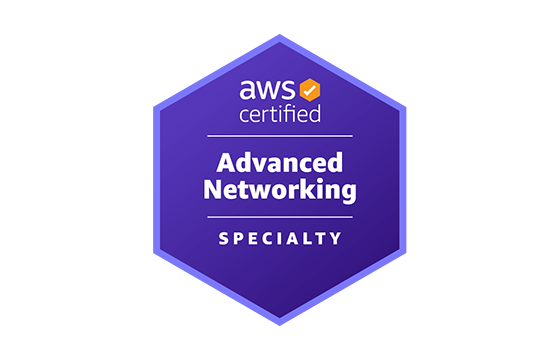



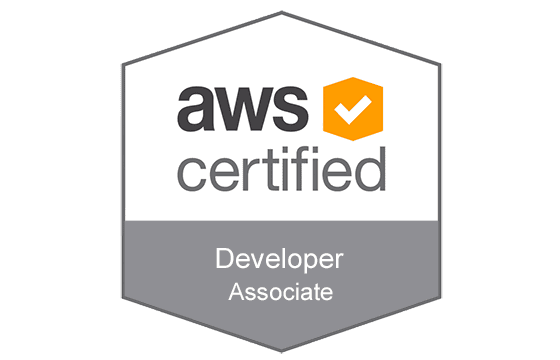
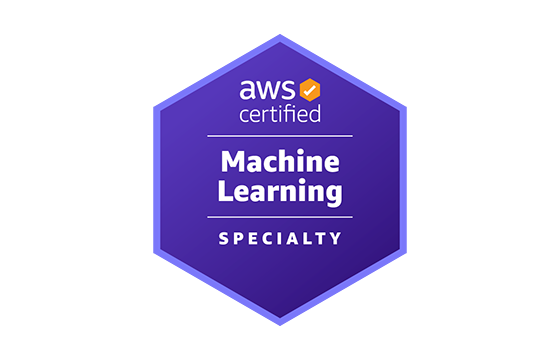

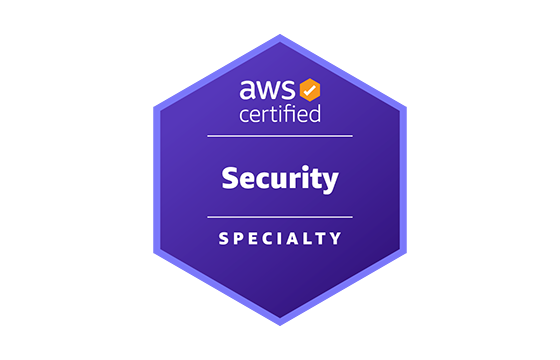
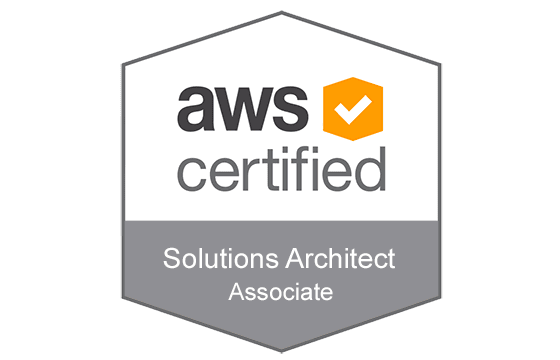
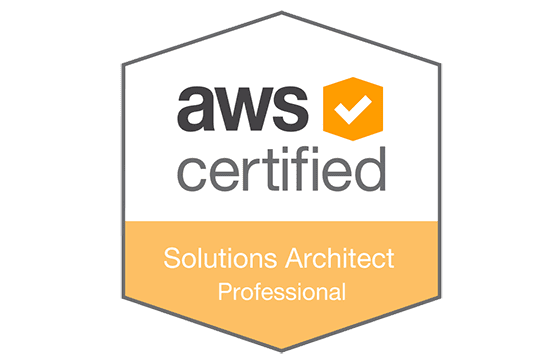
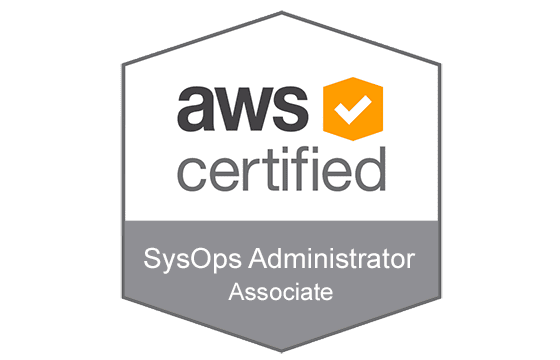
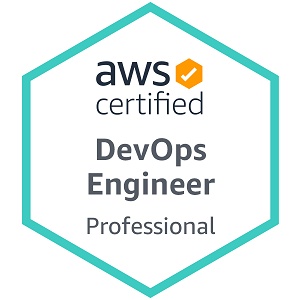



Is the premium still valid as of 7/12/22?
AWS Certified Solutions Architect - Associate (SAA-C02)
Can I know if these questions are topicwise or seggregated??
Cleared my exam. The dumps helped.
The premium file and the other training materials will sure help you to pass this quite difficult exam. So yes the premium file is valid. However do not count on this alone!
Hi friends! Please, could anyone tell me if this premium file is valid for passing the exam? Thanks!
Is this dump valid?
@katherine, AFAIK, these dumps for SAA-C02 assessment are helpful. i guess you need to have a look at them b4 taking the actual exam. believe it or not but they’re comprised of questions which are accurate representative of what you can expect in your assessment even though they are completely free of charge. besides, those tests helped me close out my knowledge gaps and I obtained the Amazon AWS Certified Solutions Architect - Associate certification!!! TY! Exam-Collection!
indeed excellent training resources… not only covers all the info candidates need to study but also provides them with very detailed explanations of the concepts. they helped me a lot in completing my SAA-C02 exam successfully. almost all the concepts which appeared in the actual test are contained in these materials. TYVM Exam-Collection team!!!
hi folks? i’d like to prepare for my assessment using the saa-c02 practice test questions. did you find the questions in them useful? plz answer ASAP?
ppl, i practiced with SAA-C02 questions and TBH they are gr8! they help you assess your understanding of the tested content and prepare well 4 the main exam. with them, you’ll be able 2 understand the concepts well and score a good grade in your first attempt. highly recommend! GJ! exam-collection!
@sheila, IMO, amazon saa-c02 dumps are among the best prep materials available so far in the net for such an exam. i revised for my test using them and found that they cover all exam objectives. for me, most diff concepts were resilient architectures, secure applications &architectures, high-performing architectures, and cost-optimized architectures but with this platform i got the gist of them. HTH!!!!!!
hi lads… i’m searching reliable SAA-C02 dumps… should i opt for Exam-Collection?? TIA!
XOXO!!! i’m very happy for passing my exam in the first try. the SAA-C02 practice test questions offered here are really helpful. i learnt several new concepts by going through these questions which i would’ve not studied otherwise. TYSM! )))))))))